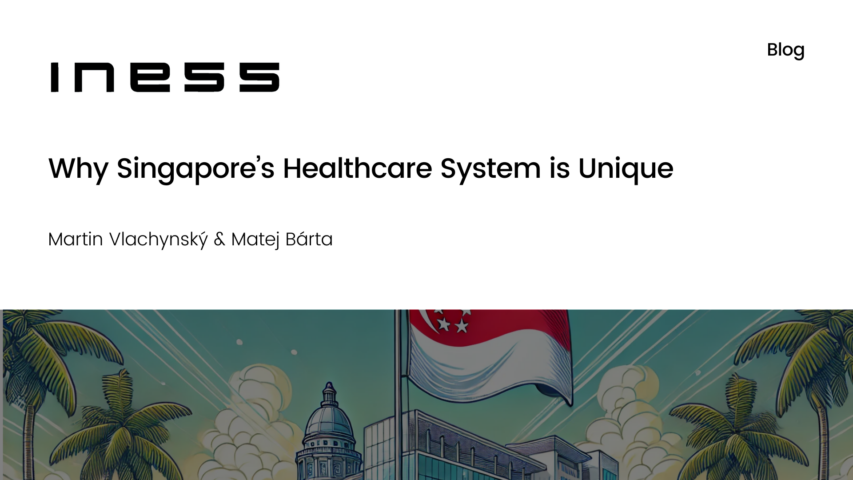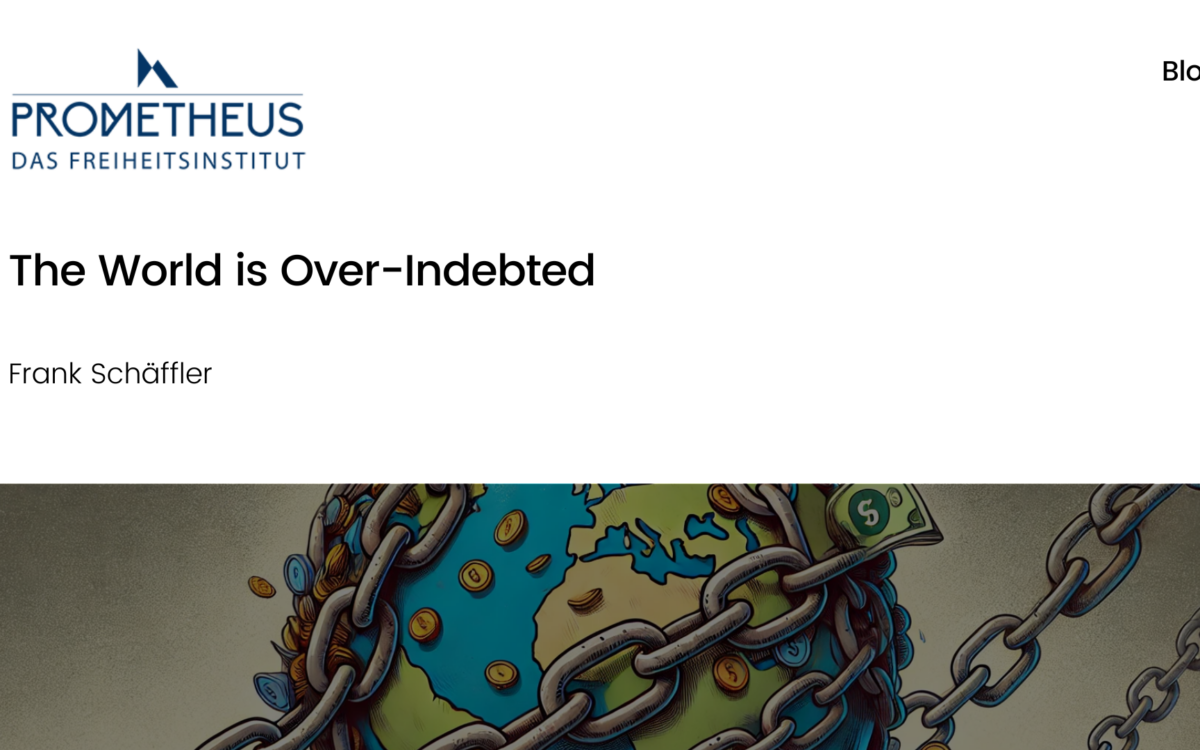Why Singapore’s Healthcare System is Unique

Why Singapore’s Healthcare System is Unique
Martin Vlachynský & Matej Bárta // 5 September 2023
Singapore’s healthcare system is the most efficient in the world, according to the latest Bloomberg health systems ranking; further, according to the Economist Intelligence Unit, Singapore has the second-best healthcare performance in the world. The country also has the fourth-highest life expectancy at birth in the world.
Singapore’s healthcare system differs significantly from those in Europe, as well as the US and Commonwealth countries. Much of the credit for the quality and sustainability of Singapore’s healthcare system goes to its unique financing structure. It rests on three pillars, expanded on below, which combine individual personal responsibility with a government ‘safety net’. Yet, most health services in Singapore are fee-for-service. The range of prices is quite wide and depends on the provider (public/private), the quality of additional services, the location, and whether the patient is ‘subsidised’ or ‘private’.
The first pillar is the MediSave health savings scheme. Singaporeans deposit a portion of their salary each month into a savings account, which is tax-free and also pays interest. Certain groups of savers receive a financial contribution from the government towards their MediSave accounts. It is also possible to make voluntary (tax-deductible) deposits, but up till a defined maximum amount. The maximum cumulative amount that savings in a citizen’s account can reach is SGD 68,500 in 2023. Contributions above this amount are redirected to retirement savings.
Individuals use the money they save to pay for less expensive healthcare, creating a more direct link between consumers and cost in healthcare. At the same time, savers can also use their savings to pay for the care of family members, which creates additional incentives to avail healthcare services wisely and promotes personal responsibility. At the same time, however, there are limits on withdrawals from this account to prevent it from being depleted before old age. MediSave cannot be used for just any healthcare expenditure. For example, there are 19 specific diagnoses for chronic conditions approved, and all have a mandatory 15 per cent cash deductible.
The second pillar of funding is called MediShield Life, and its main goal is to ensure the affordability of procedures such as chemotherapy and dialysis – that is, procedures that are not routine care or whose costs exceed savings in MediSave accounts. It is funded by insurance premiums, which Singaporeans are required to pay and which increase with age, and by a government subsidy of premiums. However, even the latter is not universal and is based on income and age.
MediShield does not cover the entire cost of treatment. There is a ‘deductible’, a fixed fee, which again depends on the service and age. In addition to the deductible, there is a percentage co-payment that decreases as the total amount billed increases. Moreover, there is a maximum annual limit of SGD 150,000 per MediShield patient per year. MediShield Life insurance can be supplemented with private supplementary insurance. Funds saved in pillar one can be used to pay for this private supplementary insurance.
The third pillar of healthcare financing in Singapore is MediFund. It is a kind of ‘safety net’ that ensures that even individuals in need, who cannot cover their own healthcare expenses, have access to healthcare. MediFund steps in only when individuals have trouble paying for care even after MediSave, MediShield Life, and out-of-pocket funds have been exhausted. Each healthcare provider covered by MediFund has an independent committee that reviews and approves claims and makes decisions about the amount of assistance provided. This depends on the financial, health, and social situation of the individual and their family members, as well as the total amount of the medical bill.
The Singapore government is making healthcare more affordable not only through premium subsidies but also through a number of other policies. For example, for patients who choose to undergo hospitalisation in an eight-bed room, the government provides a subsidy of up to 80% of the cost of hospitalisation. In contrast, hospitalisations in single-bed rooms are not subsidised by the government.
The same subsidy scheme also applies, for example, to day surgery, for which subsidies (depending on income) range from 50 per cent to 80 per cent. A visit to a general practitioner in a public clinic is subsidised by up to 75 per cent, as is a visit to a specialist (the patient’s income is taken into account). In total, there are up to 25 different health subsidy schemes in the country as of 2023.
Singapore’s health system contains two elements that are key to the sustainable provision of affordable and quality healthcare. First, it not only motivates individuals to take personal responsibility through greater linkages to healthcare reimbursement, but it also encourages them to take care of their own health. Second, it seeks to use health facilities and staff as efficiently as possible by focusing on maximising value and transferring some of the care from the institutional setting and on to communities.
In particular, the financing system is unique. Although its complexity has increased in recent years, with the emergence of new schemes and programmes, its existence still creates useful incentives.
Firstly, it forces patients to consider the value of the healthcare they receive and the various alternatives for using limited financial resources. For example, they may choose a less comfortable hospital room and use the savings to purchase additional insurance or shift resources to their loved ones. The patient behaves in a consumer-like manner, and a client–provider relationship is established. Additionally, it builds real financial savings for costly healthcare at an older age at the individual level. Furthermore, the ability to differentiate products opens up new opportunities for providers. Patients paying for more luxurious conditions can cross-subsidise more mass-market services. The possibility of differential pricing creates conditions for retaining top (expensive) health professionals while leaving room for those starting out (cheap). Finally, a rich product structure creates competition in the environment, which helps to control cost growth.
Obviously, the Singaporean system is rooted in a different culture, and it would be extremely difficult to completely translate it to the European environment with its century-long history of socialised medicine. However, some elements may be worth trying to implement. The Singaporean system provides a safety net and universal access, much like European systems. But it is heavily supplemented with a competitive, decentralised system, working on commercial principles. It differentiates between casual ‘consumer’ healthcare (simple procedures and services), which is commodified and included in the daily expenditures of citizens, and ‘catastrophic’ healthcare (serious and expensive chronic diagnoses), which requires coordinated help from the whole society. The result is a prudent but highly efficient system. In practical policy terms, it means the greater financial involvement of patients, a stricter definition of free/subsidised care, competition among providers, the co-existence of commercial and public providers, and the creation of financial reserves in the system. These policies would help to focus public spending on key areas, which can prevent the potential collapse of universal public healthcare in the future due to ageing.
This article is an English summary of INESS’ publication that appeared in Slovak about the Singaporean healthcare model.
EPICENTER publications and contributions from our member think tanks are designed to promote the discussion of economic issues and the role of markets in solving economic and social problems. As with all EPICENTER publications, the views expressed here are those of the author and not EPICENTER or its member think tanks (which have no corporate view).



